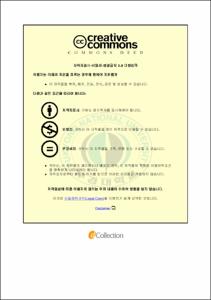지속가능한 토지이용을 위한 에머지생태지도 개발과 활용에 관한 연구
- Alternative Title
- Development of the Ecological Emergy Map for the Sustainable Land Use
- Abstract
- Land planning that conducted by optimum procedure for trading off, between the conserved and developed areas may diminish the natural environment but may also lead to possible sustainability of land use. Environmental Conservation Value Assessment Map (ECVAM) and Ecological Map (ELM) have been used in Korea. Although two maps use the same standards and could be a universal standard in Korea limitations may exist in accessing some specific areas such as tideland. The two maps stated above concentrated mainly on the assessment of biodiversity and ignores the aspect of urban ecosystems.
The Biotop Conservation Map (BVM) been made for covering the above limitation. However BCM has no uniform standard and assessment.
An integrative map was newly designed to take advantages of the three maps. Emergy methodology was utilzed to evaluated advantages of the indices in difference maps. Emergy values were efficient in presenting to the indices such as renewability, environmental loading ratio, nonrenewable empower intensity, landscape development intensity, etc., according to land use.
Three emergy indices were selected from the overall list of quantitative emergy indices, by evaluating the energy relationships with the variables for describing indicators. The chosen indices were suitable for characterizing the variables and were consequently efficient in explaining the indicators for determination of conservation areas.
After evaluation of three emergy values, new map, which called Ecological Emergy Indicator (EEI), was constructed by using ArcGIS and the Ecological Emergy Map (EEMI). The proposed map was applied to relation data collected in Busan and was efficient in classifying specific land use types. For instance, the tideland was classified as while forest and planted areas was regarded as second class.
The ecological integrative map was more suitable in presenting the ecosystem quality, since the map uses all levels of energy in an integrative manner. The map was also universal and could be used as a standard in Korea.
Consequently the map contribute to effective management and sustainability of land.
- Issued Date
- 2010
- Awarded Date
- 2010. 2
- Type
- Dissertation
- Publisher
- 부경대학교
- Alternative Author(s)
- Sang Hyun Park
- Affiliation
- 부경대학교 대학원
- Department
- 대학원 지구환경공학학ㆍ연협동과정
- Advisor
- 이석모
- Table Of Contents
- 목 차
목차 ⅰ
List of Tables ⅳ
List of Figures ⅵ
List of Appendices ⅸ
Abstract ⅹ
Ⅰ. 서 론 1
Ⅱ. 이론적 배경 4
1. 지속가능한 토지이용의 필요성과 개념 4
가. 지속가능한 토지이용의 필요성 4
나. 지속가능한 토지이용의 개념 4
2. 지속가능한 토지이용을 위한 지도 6
가. 국토환경성평가지도 6
나. 생태자연도 8
다. 비오톱지도 10
3. 시스템 생태학과 에머지 11
가. 시스템 생태학 11
나. 에머지의 정의 14
다. 에너지변환도의 정의 14
라. 에너지변환 계층구조에 따른 에너지의 공간분포 15
Ⅲ. 연구방법 17
1. 대상지역 18
가. 대상지역 선정 18
나. 대상지역의 현황 18
다. 대상지역의 토지이용도제작 22
2. 대상지역의 에머지 분석 28
가. 에너지 시스템 다이어그램 작성 28
나. 에머지 분석표 작성 29
다. 에머지 지수 계산 29
라. 에머지 생태 지표 34
마. Kappa 분석 35
Ⅳ. 결과 및 고찰 36
1. 서부산지역의 에머지 분석 36
가. 전체지역의 에머지 분석 36
나. 토지이용별 에머지 분석 46
다. 토지이용별 에머지 지수 비교 73
2. 서부산지역 에머지 지도 작성 및 평가 80
가. 자연환경 에너지원의 점유율 지도 작성 및 평가 80
나. 환경부하율 지도 작성 및 평가 83
다. 단위면적당 재생불가능자원의 사용량 지도 작성 및 평가 85
라. 단위면적당 자연자원 보유량 지도 작성 및 평가 87
마. 경관 개발 강도 지도 작성 및 평가 89
바. 지속성 지도 작성 및 평가 91
3. 에머지 생태 지도 작성 93
가. 에머지 생태 지표를 위한 에머지 지수 선정 93
나. 에머지 생태 지표를 이용한 에머지 생태 지도 작성 98
다. 기존 평가지도 비교 101
V. 결론 107
참 고 문 헌 111
Appendix 122
감사의 글 157
- Degree
- Doctor
- Appears in Collections:
- 대학원 > 지구환경공학연협동과정
- Files in This Item:
-
-
Download
 지속가능한 토지이용을 위한 에머지생태지도 개발과 활용에 관한 연구.pdf
기타 데이터 / 8.05 MB / Adobe PDF
지속가능한 토지이용을 위한 에머지생태지도 개발과 활용에 관한 연구.pdf
기타 데이터 / 8.05 MB / Adobe PDF
-
Items in Repository are protected by copyright, with all rights reserved, unless otherwise indicated.